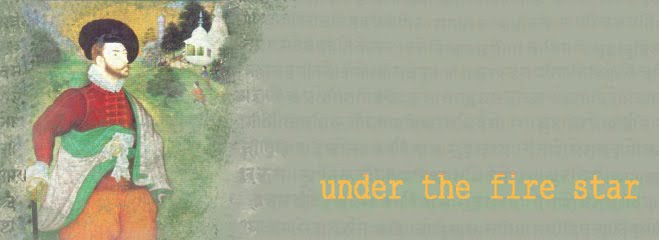
I came across this photograph yesterday (click for a larger view). The elderly man in the centre, wearing a white turban, is R's great-grandfather, Chatrabuj Gandhi. R is not sure about the rest, but one of the young men standing behind him must be R's grandfather Dwarkadas; Dwarkadas's oldest son, Mangaldas, R's father, is probably one of the small boys.
It doesn't matter if none of these people are actually in the photograph -- they could all be complete strangers. What I thought when I studied their faces was that these people, like us, were all starring in their own internal stories, even as they sat for the photographer; I imagine that they were all convinced that they were exceptional and significant in the universe. And of course, for all intents and purposes they have all vanished without leaving much of a trace: a faded photograph, some DNA, maybe a house one or two of them built, which still stands in the village.
I know all this, and yet part of me is still convinced most of the time that I'm the star of the play, and that I will never die.
(Actually, the very first thing I thought was about styles of headgear: the elders are wearing turbans; the younger generation, round caps. In more recent pictures of R's father and uncles, they are all wearing white caps shaped roughly like an upturned canoe; and the younger generations have abandoned headwear altogether. And -- oh yes -- where are the women? They didn't observe purdah, and the girl children are included. Were they standing to the side, observing the occasion, or preparing the after-photograph lunch? I bet they were all starring in their own stories nonetheless.)





